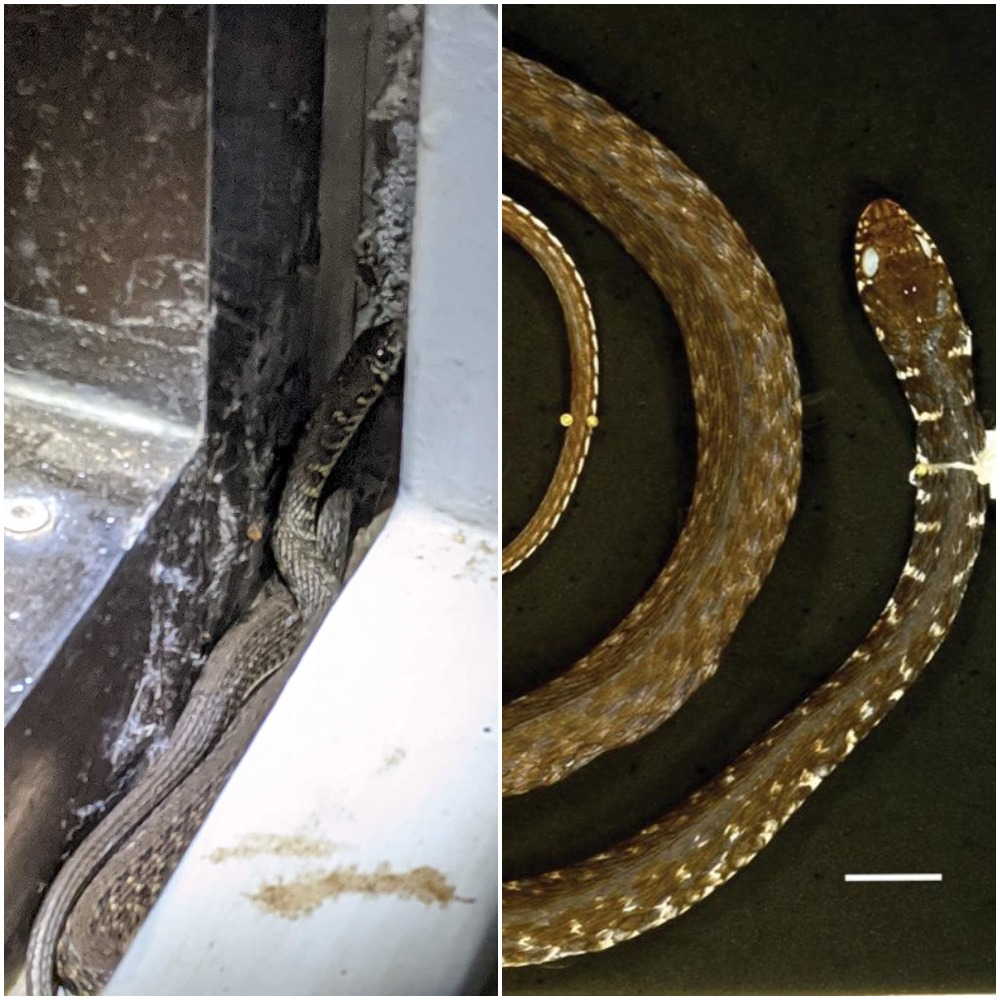
A citizen-science project aiming to identify snakes in Myanmar has found a species so rare it has only been seen about six times in the last 149 years.
People who come across the reptiles post their photographs to Facebook group Snakes of Myanmar for a quick species identification done by a mix of full-time herpetologists and enthusiasts, who also assess the level of risk posed by the snake.
One member posted on Sunday (September 6) a photo of a small snake (pictured above) near the door of her house in Yangon’s East Dagon Township, writing that it was “a little dark and I didn’t want to get close.”
Though just another snake to the untrained eye, stunned herpetologists said it was the xenochrophis bellulus— the Burmese keelback water snake—a harmless, semi-aquatic species first recorded in 1871 and only seen a handful of times since, said environmentalist Kate Woolf, who helps run the group along with 20 other volunteers.
“We know very little about Burmese keelbacks because so few have ever been found,” she told Myanmar Mix, adding that an academic from Mandalay is planning to visit the site.
“People will be absolutely going to that area,” she said.
Of the 15 “Snakes of” Facebook groups covering Laos, Cambodia, Vietnam, West Malaysia, Singapore, Borneo and the Palawan Island, volunteer Mark Lavington said it was “possibly the rarest species we have had.”
“A recent 12-year survey of snakes in Myanmar turned up only one specimen,” he said. “Fantastic sighting, very exciting.”
Herpetologist Ferdinand Stoliczka described the snake as having unique features when he collected a specimen in Bago region in 1871, especially “the sides of the neck with transverse yellowish bards, the skin next to the bars being intensely black.”
“Given the original specimen from 1871 has gone missing, there are literally only four or five specimens held in academic hands,” added Lavington.
Started in December 2019, the Snakes of Myanmar group receives photographs from across the country daily. Myanmar has one of the highest incidences of snakebites in Southeast Asia. Official figures put the annual toll at 13,000 cases of snakebite and at least 600 deaths, though some experts estimate the number to be higher.
However, around 84 percent of snakes are harmless to humans in Myanmar, said Woolf.
The group, she said, was designed to educate people and address myths and misinformation about snakes.
“There is so much we still don’t know and that needs to be discovered and studied in Myanmar. We were all really excited to see what a citizen science group like this could churn up,” said Woolf.
Woolf also posts advice on the group about how best to handle snake interactions. In a recent snippet, she said that “if you see a snake, freeze and then slowly take three to five big steps backwards, and then slowly walk away.”
“Do not try to kill or move an unidentified snake, because a lot of bites occur when someone tries to kill a snake,” she wrote. “Get a photo if you can, post in here for an identification and we can advise you on the next steps to take."

